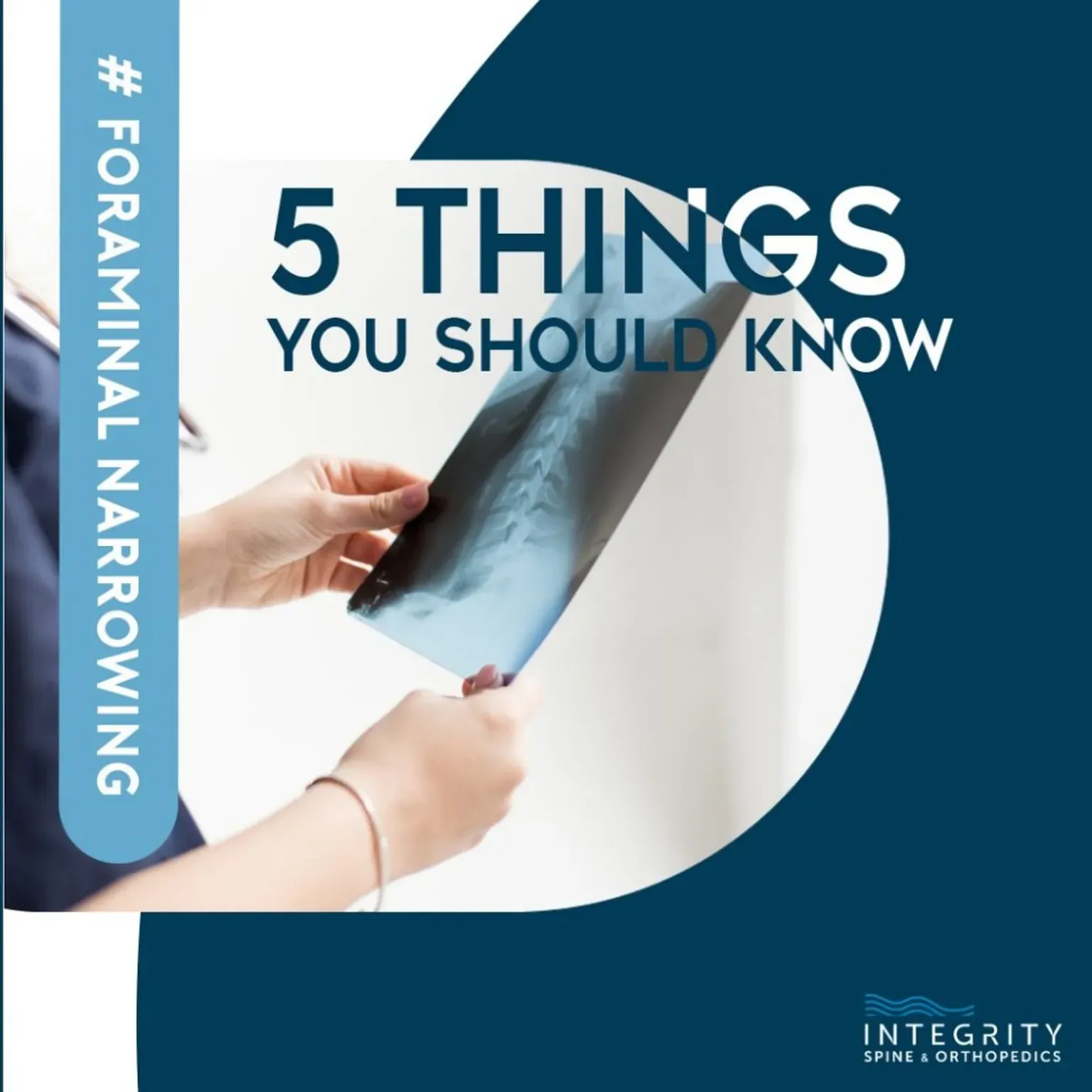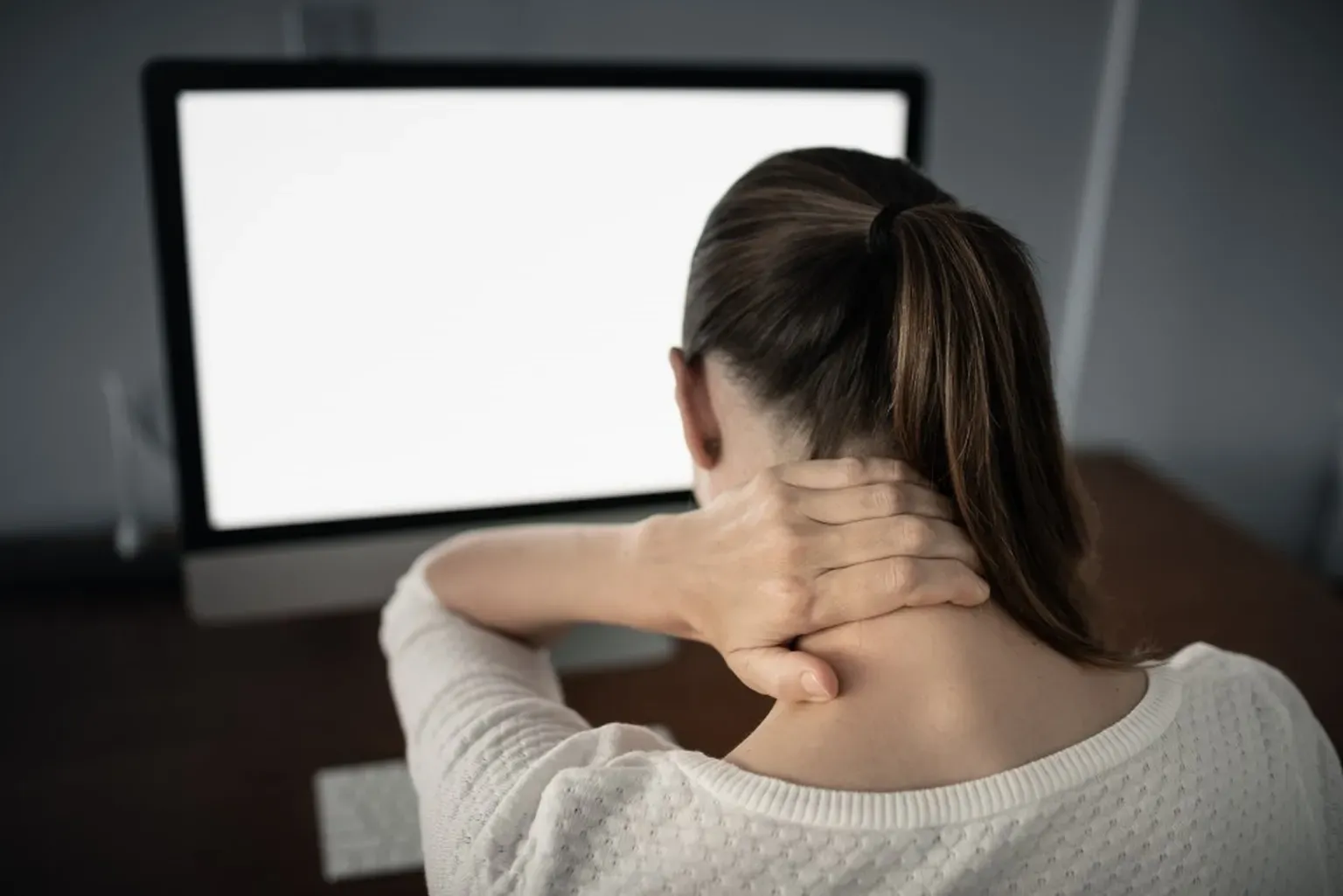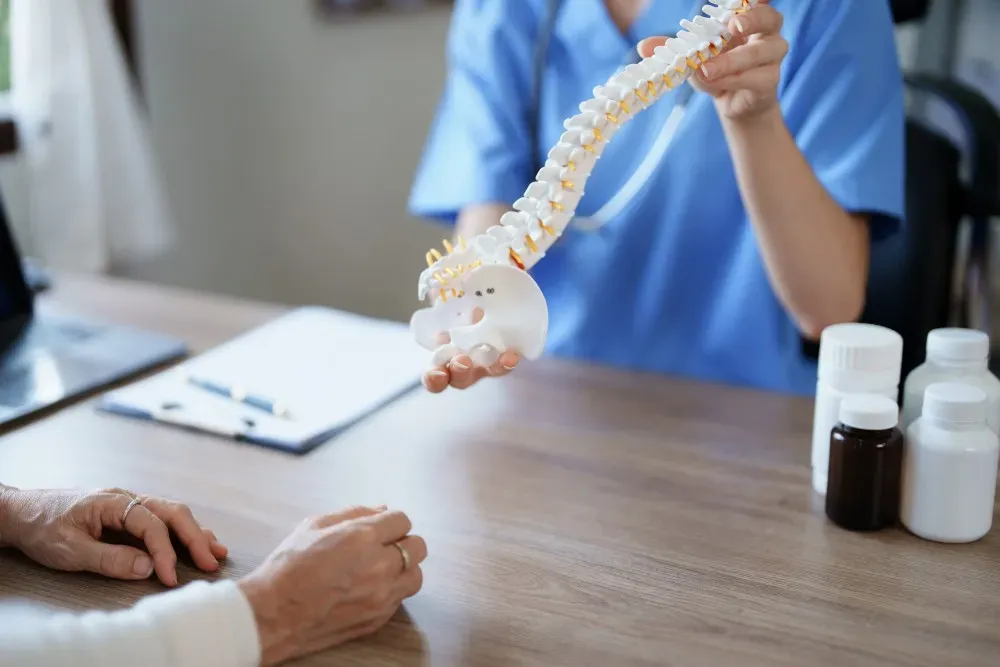Neurosurgery & Orthopedic Surgeons in Jacksonville

5 Things You Should Know About Foraminal Narrowing
Foraminal narrowing is a specific type of spinal stenosis, a back condition that occurs when the open spaces within the spine narrow. The foramina are bony passageways located between the vertebrae in the spine.
5 THINGS YOU SHOULD KNOW ABOUT FORAMINAL NARROWING
Foraminal narrowing is a specific type of spinal stenosis, a back condition that occurs when the open spaces within the spine narrow. The foramina are bony passageways located between the vertebrae in the spine. Their primary purpose is to provide an exit path for nerves leaving the spinal cord and traveling to other parts of the body.
Spinal stenosis is very common among older adults because age-related, degenerative spinal changes are the most common cause of narrowing. Foraminal narrowing can develop when degenerative disc disease, osteoarthritis, bone spurs or a herniated disc causes changes in the spine that narrow or tighten open spaces.
Many people have spinal narrowing and don’t know it. Why? Keep reading to find out — the answer is one of 5 facts you should know about foraminal narrowing.
1. IT’S MOST LIKELY TO DEVELOP IN THE CERVICAL OR LUMBAR SPINE (OR BOTH)
Foraminal narrowing can develop anywhere along the spine, but it’s most likely to occur in the lumbar and cervical spine. The neck and low back are the most mobile areas of the spine and bear the most weight to support movement.
2. BY ITSELF, SPINAL NARROWING DOESN’T CAUSE PAIN
By itself, spinal narrowing doesn’t cause pain, and people with minimal narrowing may not experience pain and symptoms. The condition becomes painful when open spaces tighten enough to pinch or compress nerve roots as they pass through. Depending on the location of nerve compression, you could experience a range of symptoms.
In the cervical spine, foraminal narrowing can cause neck pain, stiffness and decreased mobility when you try to turn your head. You may also experience pain, numbness, tingling and weakness that travels from the neck to the shoulder, arm, hand and fingers. The pain can be sharp or burning.
In the lumbar spine, foraminal narrowing can cause low back pain and sciatica. Sciatica is characterized by one-sided pain, numbness, tingling and weakness that travels from the low back to the buttock, thigh, calf and foot. The pain can be sharp, burning, electric or achy.
3. SYMPTOMS USUALLY IMPROVE WITH FORWARD-BENDING POSITIONS
Lumbar stenosis pain and symptoms usually worsen when you’re sitting up straight, standing or walking for long periods. That’s because upright positions place downward pressure on the spine that further compresses and irritates the affected nerves.
Many people with foraminal stenosis find relief in forward-leaning positions that take pressure off the spine and create more space for the nerves. If you’re experiencing pain, consider using a walker or leaning on a shopping cart when you’re out running errands. At the gym, you may find that exercise is less painful on a forward-leaning stationary bike.
4. PHYSICAL THERAPY AND EXERCISE ARE CRUCIAL FOR MANAGING FORAMINAL STENOSIS
Without proper care and treatment, spinal narrowing could cause debilitating pain and symptoms that make it difficult for you to walk or perform daily activities. If you’re experiencing symptoms of foraminal stenosis, seek medical advice from a trusted orthopedist. Your doctor will likely start you out on a course of anti-inflammatory medications, steroid injections, activity modifications and physical therapy.
Physical therapy and exercise are keys to managing your condition and reducing pain and discomfort. While it may be tempting to rest when you’re in pain, prolonged immobilization can worsen symptoms and cause progressive back and leg weakness. A therapist will work with you to help strengthen the low back, core and leg muscles that support and stabilize the spine. Therapy will also help you regain mobility, and improve balance, flexibility and endurance. Your therapist can guide you through gentle exercises and stretches that help relieve pain and pressure in the spine.
The work doesn’t stop once you’re finished with a guided physical therapy course. At home, you should continue to perform the exercises and stretches your therapist showed you. You should also find enjoyable, low-impact exercises that help you stay active and maintain good strength and mobility. Walking, swimming, water aerobics, stationary bikes, ellipticals, yoga and tai chi are all excellent options to keep you moving while placing less stress on the spine.
5. SPINAL NARROWING IS IRREVERSIBLE
Unfortunately, foraminal narrowing can’t be reversed. While exercise and weight management can keep you healthy and pain-free for many years, your condition may progress to the point where pain and symptoms are affecting your quality of life and ability to perform daily tasks. If conservative treatments aren’t effective, there are surgical options available.
At Integrity Spine and Orthopedics, our surgeons perform minimally invasive spinal procedures to help reduce pain and symptoms caused by conditions like spinal stenosis. Minimally invasive surgical techniques are used to relieve pressure on pinched nerve roots (by removing bone spurs, a herniated disc or vertebral bone) and create more space in the spine.
Minimally invasive spine surgeries offer several benefits over traditional, invasive procedures. They require a smaller incision (as small as 3-5 inches), cause less damage to surrounding muscles and soft tissues, and lower the risk of infection and complications. Because minimally invasive procedures are muscle and tissue sparing, they usually cause less post-surgical pain and swelling. Recovery and rehabilitation are faster, and many of our patients return to their normal activities within a few weeks after surgery.
CONTACT INTEGRITY SPINE AND ORTHOPEDICS FOR SPINE AND JOINT MEDICAL ADVICE
Integrity Spine and Orthopedics specializes in performing minimally invasive spinal procedures for a range of painful spine conditions, including herniated discs, arthritis of the spine, bone spurs and spinal stenosis. We also offer pain management and general orthopedic services to help you manage acute or chronic back and joint pain.
Please call us at 904-456-0017 to request an appointment to see one of our board-certified orthopedic doctors in our Jacksonville, FL, clinic location. You can also reach out to us online.




